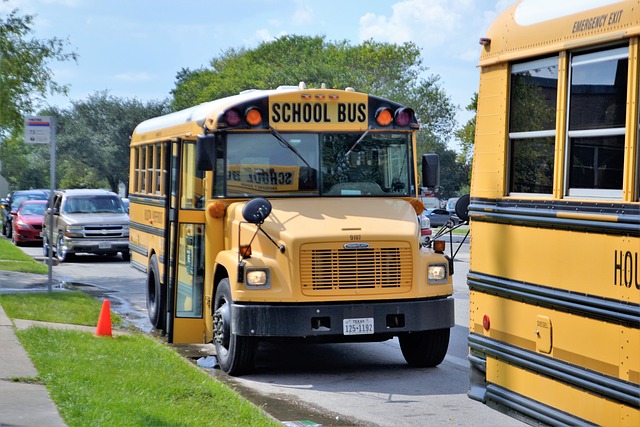As the summer break comes to an end, it’s time for kids to head back to school. This period can be exciting and sometimes nerve-wracking, especially when it comes to safety. Ensuring that children of all ages are prepared and aware of safety measures can make a big difference in their overall well-being and peace of mind for both kids and parents. And if an injury does occur, knowing when to seek help from a professional, such as a Las Vegas injury attorney, can make all the difference in addressing any legal concerns that may arise. Here are some comprehensive back-to-school safety tips for children from preschoolers to teenagers.
1. Walking to School or the Bus Stop
Preschoolers and Elementary School Kids: Younger children should always be accompanied by an adult when walking to school or the bus stop. Teach them to use sidewalks and crosswalks, look both ways before crossing the street, and make eye contact with drivers to ensure they are seen.
Middle and High School Kids: Older children who walk to school or the bus stop should always use a buddy system. Remind them to stay aware of their surroundings, avoid distractions like texting or listening to music at high volumes, and never accept rides from strangers.
2. School Bus Safety
All Ages: Regardless of age, all children should arrive at the bus stop at least five minutes early to avoid rushing and potentially stepping into traffic. Teach them to stand at least three giant steps away from the curb while waiting for the bus. When boarding or exiting the bus, they should always cross in front of the bus where the driver can see them.
Younger Children: Explain the importance of staying seated on the bus, keeping aisles clear, and following the driver’s instructions. Encourage them to use quiet voices so the driver can concentrate.
3. Car Safety
All Ages: Children should always wear seat belts and use the correct car seats or booster seats for their age and size. Never let children ride in the front seat until they are at least 13 years old due to airbag safety.
Teen Drivers: If your teenager is driving to school, remind them about the importance of obeying speed limits, avoiding distractions like mobile phones, and never driving under the influence of alcohol or drugs.
4. Biking to School
Younger Kids: Children should wear properly fitted helmets and bright clothing to increase visibility. They should use bike lanes where available and learn the basic hand signals for turning and stopping.
Older Kids: Encourage teens to perform a quick bike safety check before heading out – checking tires, brakes, and lights. Remind them to follow traffic laws, ride predictably, and avoid busy roads when possible.
5. Personal Safety
Preschoolers and Elementary School Kids: Teach younger kids about “stranger danger” but also ensure they know how to seek help from trusted adults like teachers, police officers, or family friends.
Middle and High School Kids: Discuss the importance of being aware of their surroundings and trusting their instincts if they feel unsafe. Encourage them to have a safety plan, like knowing the quickest routes to safe places such as home or a friend’s house.
6. School Playground Safety
All Ages: Regardless of age, teach kids not to push, shove, or crowd others on playground equipment. Ensure they use playground equipment that is appropriate for their age group and is in good repair.
Younger Kids: Remind them to use slides and swings properly and wait their turn. Also, make sure they understand the importance of being aware of other children to avoid accidents.
7. Internet Safety
Elementary School Kids: Set ground rules for internet use and monitor their online activities. Teach them never to share personal information online and to report any uncomfortable situations to a trusted adult.
Middle and High School Kids: Older kids should be reminded about the permanence of their digital footprint and the importance of privacy settings. Discuss the dangers of cyberbullying and online predators and encourage open communication if they encounter something troubling online.
8. Health and Hygiene
All Ages: With concerns about illnesses like the flu and COVID-19, children should be taught proper hand-washing techniques and to cover their mouths when sneezing or coughing. Encourage them to use hand sanitizer and avoid sharing personal items like water bottles or snacks.
Middle and High School Kids: Older students should be aware of their health needs, like staying hydrated, managing stress, and getting enough sleep. Encourage them to advocate for themselves if they are feeling unwell or overwhelmed.
9. Emergency Preparedness
All Ages: Teach children about emergency procedures, including fire drills, lockdowns, and other safety protocols at school. Ensure they know their contact information and who to reach out to in case of an emergency.
Younger Kids: Practice these safety procedures at home and ensure they understand what to do in different emergency scenarios, like what to do if they get lost.
Older Kids: Encourage older students to keep a small emergency kit in their backpacks, including a list of emergency contacts, a flashlight, and a whistle.
10. Emotional Safety
All Ages: Going back to school can be emotionally challenging for kids of all ages. Encourage open dialogue about their feelings, and let them know it’s okay to feel nervous or anxious.
Younger Kids: Help younger children by role-playing different school scenarios, such as meeting new friends or asking the teacher for help.
Older Kids: Encourage older students to talk about their experiences and feelings and offer them strategies to cope with stress, such as deep breathing, journaling, or talking to a counselor.
By implementing these back-to-school safety tips, you can help ensure your child is prepared for a safe, happy, and successful school year. Remember, safety is not just about physical well-being but also includes emotional and digital safety. Preparing children with the knowledge and tools they need will give them the confidence to navigate their school environments securely and responsibly.







Recent Comments